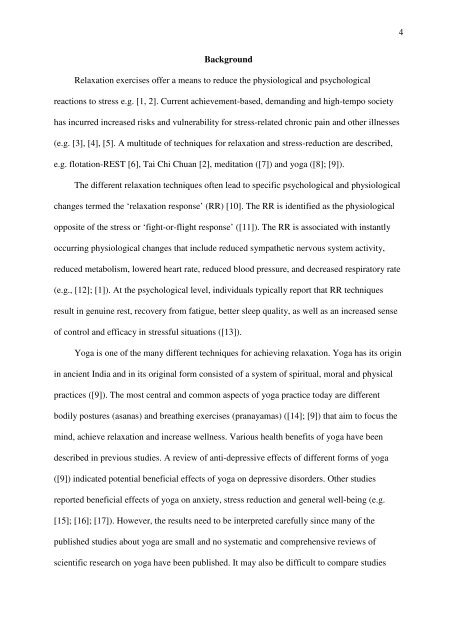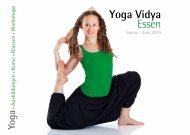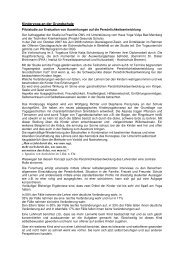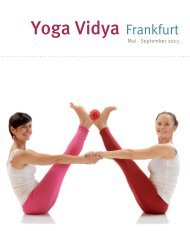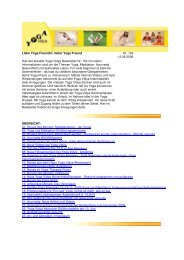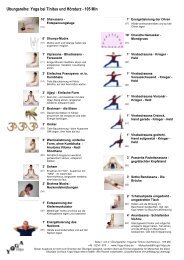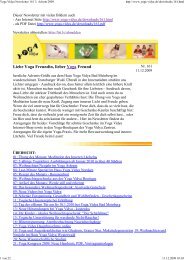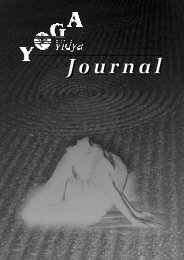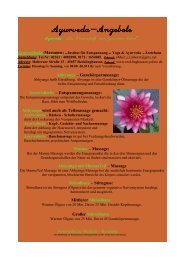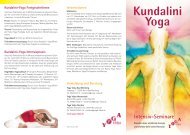BMC Complementary and Alternative Medicine - Yoga Vidya
BMC Complementary and Alternative Medicine - Yoga Vidya
BMC Complementary and Alternative Medicine - Yoga Vidya
- No tags were found...
You also want an ePaper? Increase the reach of your titles
YUMPU automatically turns print PDFs into web optimized ePapers that Google loves.
4BackgroundRelaxation exercises offer a means to reduce the physiological <strong>and</strong> psychologicalreactions to stress e.g. [1, 2]. Current achievement-based, dem<strong>and</strong>ing <strong>and</strong> high-tempo societyhas incurred increased risks <strong>and</strong> vulnerability for stress-related chronic pain <strong>and</strong> other illnesses(e.g. [3], [4], [5]. A multitude of techniques for relaxation <strong>and</strong> stress-reduction are described,e.g. flotation-REST [6], Tai Chi Chuan [2], meditation ([7]) <strong>and</strong> yoga ([8]; [9]).The different relaxation techniques often lead to specific psychological <strong>and</strong> physiologicalchanges termed the ‘relaxation response’ (RR) [10]. The RR is identified as the physiologicalopposite of the stress or ‘fight-or-flight response’ ([11]). The RR is associated with instantlyoccurring physiological changes that include reduced sympathetic nervous system activity,reduced metabolism, lowered heart rate, reduced blood pressure, <strong>and</strong> decreased respiratory rate(e.g., [12]; [1]). At the psychological level, individuals typically report that RR techniquesresult in genuine rest, recovery from fatigue, better sleep quality, as well as an increased senseof control <strong>and</strong> efficacy in stressful situations ([13]).<strong>Yoga</strong> is one of the many different techniques for achieving relaxation. <strong>Yoga</strong> has its originin ancient India <strong>and</strong> in its original form consisted of a system of spiritual, moral <strong>and</strong> physicalpractices ([9]). The most central <strong>and</strong> common aspects of yoga practice today are differentbodily postures (asanas) <strong>and</strong> breathing exercises (pranayamas) ([14]; [9]) that aim to focus themind, achieve relaxation <strong>and</strong> increase wellness. Various health benefits of yoga have beendescribed in previous studies. A review of anti-depressive effects of different forms of yoga([9]) indicated potential beneficial effects of yoga on depressive disorders. Other studiesreported beneficial effects of yoga on anxiety, stress reduction <strong>and</strong> general well-being (e.g.[15]; [16]; [17]). However, the results need to be interpreted carefully since many of thepublished studies about yoga are small <strong>and</strong> no systematic <strong>and</strong> comprehensive reviews ofscientific research on yoga have been published. It may also be difficult to compare studies


